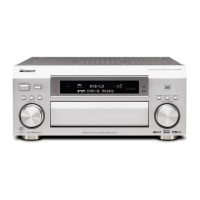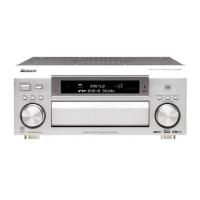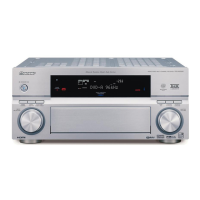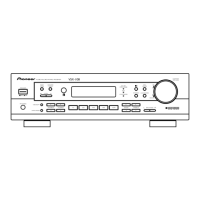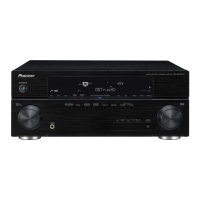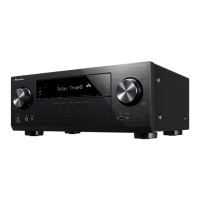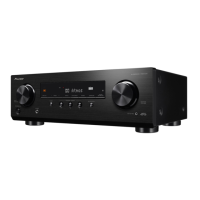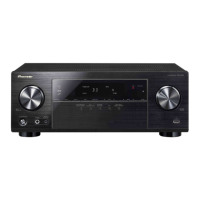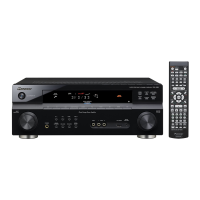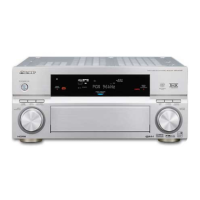
Do you have a question about the Pioneer VSX-AX2AV-G and is the answer not in the manual?
| Type | AV Receiver |
|---|---|
| Channels | 7.1 |
| Power Output (6 ohms, 1 kHz, 1 channel driven) | 170 W |
| Frequency Response | 5 Hz - 100 kHz |
| HDMI Inputs | 2 |
| HDMI Outputs | 1 |
| Weight | 22.5 kg |
| THX certified | Yes |
| Dolby Digital | Yes |
| DTS | Yes |
| Auto speaker calibration | Yes |
| Video upscaling | Yes |
| Total Harmonic Distortion | 0.09% |
| Signal-to-Noise Ratio | 100 dB |
| Component Video Inputs | 3 |
| Component Video Outputs | 1 |
| Phono Input | Yes |
| Multi-room Output | Yes |
| Audio Formats Supported | Dolby Digital, DTS, Dolby Pro Logic IIx, DTS-ES |
| Amplifier Design | Direct Energy HD |
| Digital Audio Inputs | 2 Coaxial |
| Surround Sound Modes | 13 |
Warnings regarding electrical hazards and unit safety.
Guidelines for proper unit placement and environmental conditions.
Advice on power cord handling and voltage setting for safe operation.
Steps for connecting speakers and performing automatic acoustic calibration.
Connecting the microphone and starting the automatic MCACC calibration.
Confirming detected speaker setup and making necessary adjustments.
Resolving common problems during Auto MCACC setup like noise interference.
Step-by-step guide for typical TV and DVD player connections.
How to connect digital audio devices for playback and recording.
Guidance on connecting front, center, surround, and subwoofer speakers.
Ensuring correct polarity and secure connections for speaker terminals.
Recommendations for positioning speakers for the best listening experience.
Steps for connecting the receiver to AC power, including plug type considerations.
Essential safety advice for handling the power cord to prevent hazards.
Identification and function of buttons and indicators on the front panel.
Automatic source detection and selection of playback modes.
Guide to selecting and enjoying various surround sound listening experiences.
Using THX modes for cinematic audio reproduction in a home theater.
Switching between calibrated listening settings for different positions.
Configuring surround back channels for 6.1/7.1 decoding or generating virtual channels.
How to enter the System Setup menu using the remote control.
Detailed guide for automatic acoustic calibration for optimal sound setup.
Customizing Auto MCACC with options like Auto Mode, Speaker Settings, and THX Speaker.
Verifying speaker detection and handling errors during MCACC setup.
Configuring the use of surround back channels (Normal, Bi-Amp, Multi Room).
Detailed manual adjustments for speaker settings and acoustic calibration.
Equalizing room acoustics for a balanced frequency response.
Using professional EQ for rooms with specific acoustic characteristics.
Selecting reverb measurement, view, PC output, or advanced EQ setup.
Detailed manual configuration of speaker size, number, and crossover frequency.
Specifying size, number, and crossover for Front, Center, Surround, and Subwoofer.
Configuring speaker sizes (LARGE/SMALL) and crossover frequencies.
Steps for connecting an iPod and controlling playback via the receiver.
How to connect HDMI-compatible devices for digital audio and video.
Connecting i.LINK devices for high-speed digital audio and data transfer.
Connecting 5.1/6.1/7.1 channel analog outputs from sources like DVD players.
Using surround back terminals for stereo playback in a second zone.
Configuring independent audio systems in multiple rooms.
Operating sub room volume and source selection from the main unit.
Connecting the receiver to a Pioneer plasma display for enhanced features.
Benefits of SR+ mode, including on-screen displays and automatic switching.
Connecting a computer via RS-232C for graphical output of MCACC measurements.
Utilizing PC software to analyze and manage MCACC measurement results.
Assigning input functions to terminals and customizing input names.
Making customized settings for multi-room, SR+, and OSD display adjustments.
Setting volume levels and IR receiver types for multi-room operation.
Solutions for power-related problems like no power or automatic shut-off.
Steps to resolve common sound problems such as no sound or distortion.


